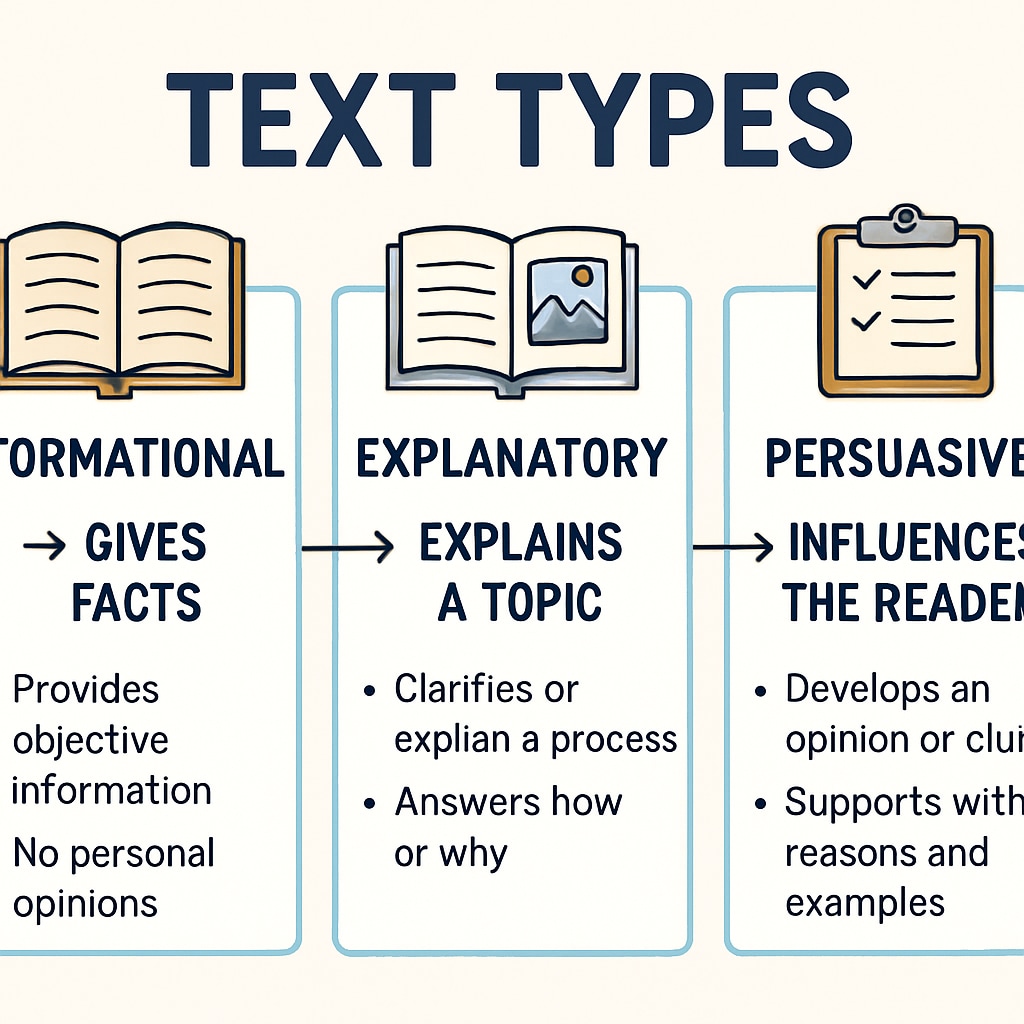When tackling Functional Skills English Level 2 reading exams, understanding how to recognize a text’s purpose is a vital skill that can bolster your performance. The ability to differentiate between informational, explanatory, and persuasive texts is essential for effective reading comprehension. In this article, we will explore key strategies to master text purpose recognition, providing you with practical tools and examples to succeed in your exams.
Understanding Text Purpose: The Foundation
Text purpose refers to the reason why a piece of writing exists and what it aims to accomplish. Broadly speaking, texts in Functional Skills English exams fall into three primary categories:
- Informational texts: Designed to provide facts or data.
- Explanatory texts: Focused on clarifying processes or concepts.
- Persuasive texts: Intend to convince readers to adopt a particular viewpoint or take action.
Each type of text exhibits distinct characteristics. Recognizing these differences can help you identify the purpose accurately.

Characteristics of Informational Texts
Informational texts are factual and straightforward. They aim to deliver objective data without expressing opinions or encouraging actions. Common examples include news articles, reports, and statistical summaries. Key indicators of informational texts include:
- Neutral tone with little to no emotional language.
- Presence of data, figures, or factual statements.
- Structured format, often including headings and bullet points.
For example, a report on annual rainfall statistics is informational. It conveys accurate data without attempting to influence the reader’s perspective.
Recognizing Explanatory Texts
Explanatory texts are written to clarify or describe processes, ideas, or concepts. They often use examples and step-by-step explanations to ensure the reader fully understands the topic. Key traits of explanatory texts include:
- Logical sequencing (e.g., first, next, finally).
- Use of diagrams or illustrations to support understanding.
- A focus on detail to ensure clarity.
For instance, instructions on how to bake a cake or a guide to setting up a smartphone are explanatory in nature. They aim to educate readers through detailed explanations.

Decoding Persuasive Texts
Persuasive texts aim to sway the reader’s opinion or encourage them to take specific actions. These texts are often emotive and may employ rhetorical devices such as repetition, rhetorical questions, or anecdotes. Common examples include advertisements, opinion pieces, and campaign materials. Key indicators of persuasive texts include:
- Emotional language and strong adjectives.
- Clear call-to-action statements (e.g., “Sign up today!”).
- Use of evidence or testimonials to support claims.
For example, a charity appeal asking for donations often employs emotional storytelling and vivid imagery to engage the reader and persuade them to act.
Practical Strategies for Text Purpose Recognition
Identifying text purpose in exams becomes easier with practice and strategy. Here are some effective methods:
- Read the title and headings: Titles often hint at the purpose. For instance, “How to Reduce Energy Bills” is likely explanatory, while “Why Solar Power is Essential” may be persuasive.
- Analyze the tone: Neutrality suggests informational texts, whereas emotional or opinionated language indicates persuasion.
- Look for structure: Step-by-step organization points to explanatory texts, while bullet points or tables are common in informational ones.
- Evaluate supporting evidence: Persuasive texts often use testimonials or anecdotes, while informational texts rely on factual data.
By applying these strategies, you can efficiently determine the text’s purpose and answer related exam questions with confidence.
Conclusion
Mastering the skill of recognizing text purposes in Functional Skills English Level 2 exams is a key step in improving your reading comprehension. By understanding and analyzing the unique characteristics of informational, explanatory, and persuasive texts, you can enhance your ability to interpret and respond to exam questions effectively. With consistent practice and the strategies outlined above, you’re well on your way to success.
For further insights into text structure and purpose, visit Reading comprehension on Wikipedia or explore Text Analysis on Britannica.
Readability guidance: Use short paragraphs and bullet points to summarize key ideas. Ensure clear transitions with phrases like “for example” and “as a result.” Maintain a balance between informative and engaging language for reader accessibility.


